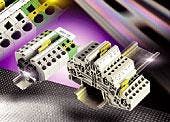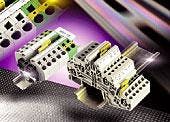Software aids oil field turbomachinery
Turbo Suite, an integrated suite of monitoring, optimization, and decision-support software for turbomachinery, helps maximize availability and performance of turbomachinery assets vital to offshore platforms, floating production system operations, and LNG plants.
The software suite improves turbomachinery operation and performance by providing users with features such as more-efficient operation, reduced fuel use, reduced emissions, increased production, lower life-cycle maintenance costs, and improved machinery availability.
To pinpoint sources of performance degradation and enable proactive maintenance, the suite uses gas turbine, compressor, and pump modeling to compare actual performance with expected performance. In addition, combustion diagnostics and life-usage monitoring assist in determining when to carry out maintenance actions.
Turbo Suite architecture is flexible enough to support data from a variety of sources, including Uniformance PHD and OPC data sources. This flexibility allows data input from sources such as condition and vibration monitoring systems. As a result, Turbo Suite functions as a centralized data repository for all turbomachinery monitoring applications.
Turbo Suite is also fully integrated with Alert Manager PKS, the company's asset-health monitoring and decision support software.
Alert Manager diagnoses turbomachinery faults to help identify appropriate maintenance actions. When the system detects a fault, Alert Manager automatically sends an email or pager notification to the appropriate administrator to initiate review and remedial action.
Source: Honeywell Industry Solutions, 101 Columbia Rd., Morristown, NJ 07962.
Terminal blocks get CSA hazardous location approval
The WKF series of feed-through and ground spring clamp terminal blocks is now CSA approved for use in Class I, Zone 1 hazardous locations.
The company says its individually approved Class I, Zone 1 interconnect devices provide a cost-effective method of meeting oil field safety standards.
These terminal blocks have been classified as Ex e (increased safety), a method of protection by which additional measures are applied to an electrical apparatus to give increased security against the possibility of excessive temperatures and the occurrence of arcs and sparks during the service life of the apparatus.
The Zone 1 approval also covers the use of these terminals in Zone 2 applications. Zone 1 locations are classified as areas with ignitable concentrations during normal operating conditions that exist for 1,000 hr/year.
It also refers to areas that are adjacent to Class 1, Zone 0 locations where ignitable concentrations of gases or vapors migrate. Zone 2 locations are 10 hr/year or less and are classified as areas where vapors or gases are not likely to occur during normal operation but could occur due to a containment vessel leak.
Source: Wieland Electric Inc., 2889 Brighton Rd., Oakville, Ont. L6H 6C9.
Production optimization services enhanced
To help operators improve productivity and extend the life of the well, this firm has added four technologies to its suite of production optimization services—reservoir performance monitoring (RPM); DepthStar tubing retrievable safety valve; relative permeability modifier technology; and SilverStim fracturing fluid system.
RPM provides high-reliability, permanent downhole monitoring solutions focused on optimizing production, maximizing reserves, and maintaining completions integrity.
The DepthStar valve functions independent of well pressure. It is able to operate at consistently low hydraulic pressures suiting it for deepwater completions.
The valve, through the use of a magnetic coupler, allows for positioning the hydraulic actuator out of the tubing wellbore.
Relative permeability modifier technology is the result of a research and development program to help operators control the production of unwanted water. This technology inhibits the ability of water to flow through the formation rock structure. In addition, the product has little to no effect on hydrocarbon flow, the company notes.
SilverStim fracturing service provides the viscosity needed to place proppant.
Source: Halliburton Energy Services, Box 3, Houston, TX 77001.
New well lubricant technology aids drilling rate
A new lubricant technology offers improved drill rate and overall operations reliability when high amounts of calcium and silicates used or met on projects would otherwise cause a delay.
EstaDril L100 lubrication technology helps reduce or remove a range of technical problems.
Principal among the technical issues solved is an improvement in lubricity properties for those who prefer to use silicate with water-based drilling mud over an oil-based mud.
EstaDril L100 promises to deliver a high level of lubricity without risk of lubricant breakdown at pH levels typically found in mud containing as much as 50 vol % sodium silicate.
In deeper wells, where calcium chloride may be added to oil-based drilling mud to protect against solidification and to remain inert to clays and shales, EstaDril L100 helps maximize lubricity in a high pH environment. And in cases where carbonate formations are encountered, the new product remains fully functional, providing the means for continued drilling in challenging conditions, the company says.
The water-based lubricant contains a blend of surfactants that promises reliable and rapid drilling in a range of conditions including those found at sites containing high levels of natural limestone such as the Pacific rim.
Source: Uniqema, Box 2, 2800 AA Gouda, Buurtje 1, 2802 BE Gouda, The Netherlands.


